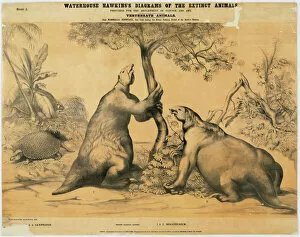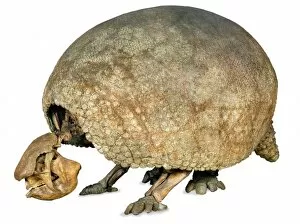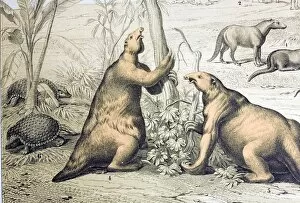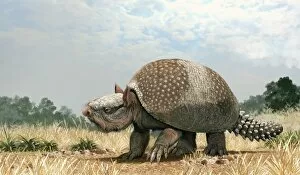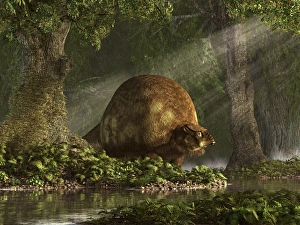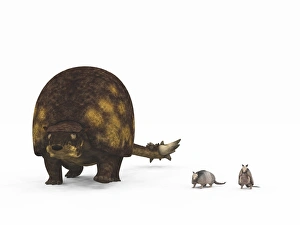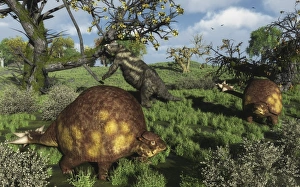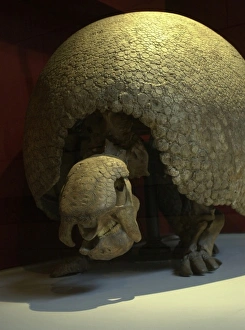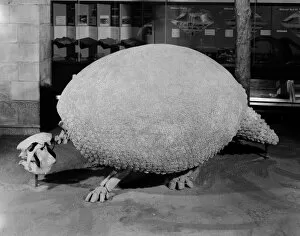Glyptodont Collection
The glyptodont, a fascinating creature from the past, shares its lineage with other remarkable prehistoric beings such as Megatherium and Glyptodon
All Professionally Made to Order for Quick Shipping
The glyptodont, a fascinating creature from the past, shares its lineage with other remarkable prehistoric beings such as Megatherium and Glyptodon. This ancient mammal, known scientifically as Glyptotherium arizonae, was part of the North American megafauna that roamed the Earth during the Pleistocene epoch. Imagine standing in awe as a large Glyptodon stands near the edge of a serene stream. Its massive size and unique armor-like shell make it an impressive sight to behold. These creatures were closely related to armadillos like Panochthus tuberculatus and Doedicurus glyptodonts but far larger in comparison. In their prime, these prehistoric giants would graze on grassy plains alongside other herbivores like Eremotherium while Archaeopteryx lithographica soared above them in the sky. Their presence shaped ecosystems during this era. Despite their extinction millions of years ago, we can still catch glimpses of their existence through fossils and artwork depicting these magnificent animals. A large glyptodont from the Pleistocene epoch is beautifully captured in one such piece - Doedicurus mammals roam freely amidst lush landscapes. Today, we marvel at these incredible creatures that once walked our planet. Prehistoric glyptodonts grazing on grassy plains remind us of an ancient world filled with wonders waiting to be discovered. The legacy they left behind serves as a reminder of Earth's rich history and inspires us to continue exploring our past for answers about our present and future.

